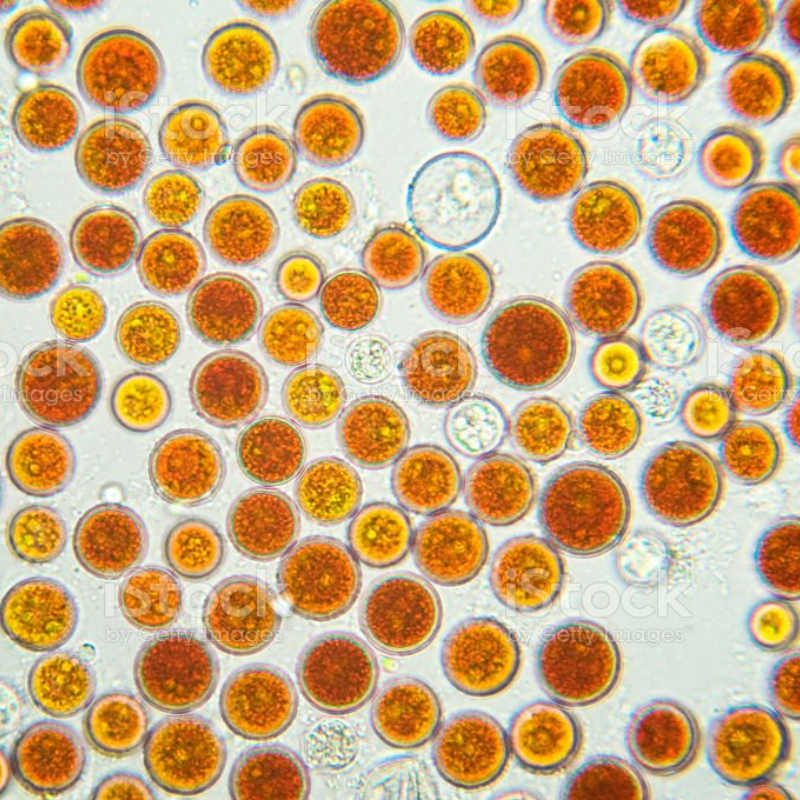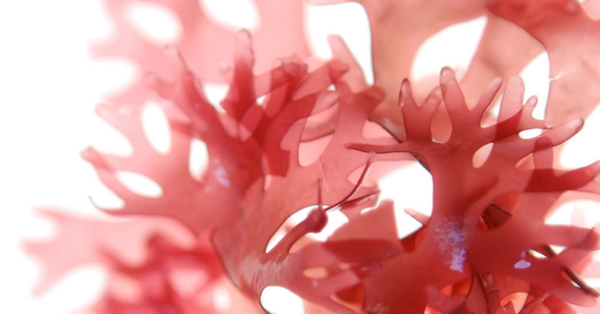Haematococcus pluvialis is a freshwater microalga belonging to family Chlamydomonadaceae. Strains of the alga extend across habitats ranging from the African lakes to the Arctic snowfields. Typical habitats are ephemeral ponds and rainwater pools, for example, rock pools in the Stockholm archipelago.

Under favorable conditions, the motile, green cells of Haematococcus pluvialis thrive, reproducing primarily by cell division. However, when facing drought, lack of nutrients, or other unfavorable conditions, the cells enter a resting state and become spores with thick cell walls. When transforming into this spore phase, these algae not only store fats as an energy source, but also begin producing and accumulating astaxanthin.
Astaxanthin acts like a force field that protects the nuclear DNA and cell content from oxidation and UV radiation. The encapsulated form of the alga is called an aplanospore and in this form, the alga can survive for long periods, even under harsh conditions.
| Sumber | Average Astaxanthin Content (mg/100g) |
| Lobster, crawfish | 0.3 |
| Salmon | 3 |
| Krill | 4 |
| Phaffia Yeast | 800 |
| Haematococcus pluvialis Microalgae | 6000 |
To sum up, astaxanthin that extract from Haematococcus pluvialis di edible for vegan too! For those who like to seek for products with astaxanthin, do visit our Organic Protein Powder with Astaxanthin >> Nuewee Organic Blackcurrant Protein with Astaxanthin

